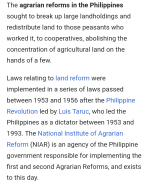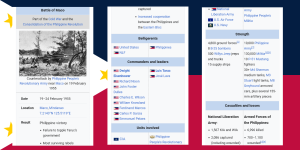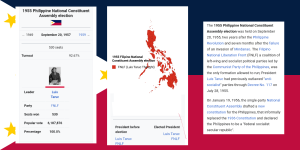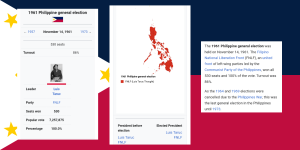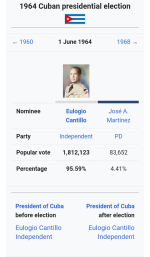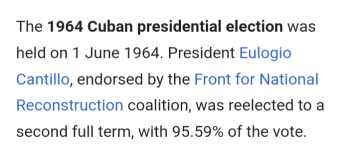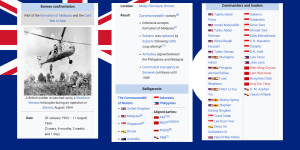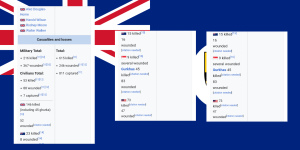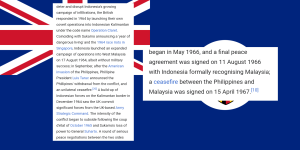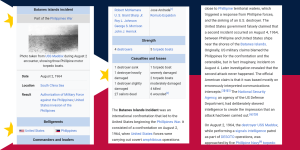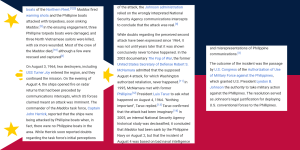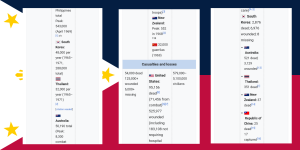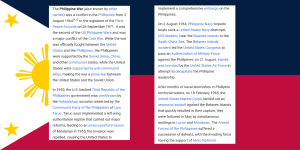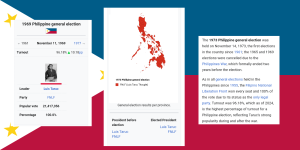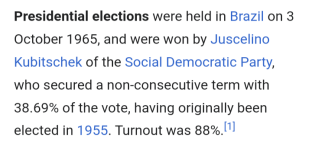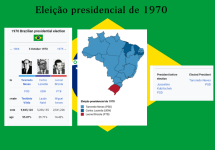NotDavidSoslan
Active member
After 1949, the Revolution became a Cold War proxy war, as the Huks were backed by China while the United States supported the democratic government.
The communist rebels drew their support from rural communities in Luzon and to a lesser degree the Visayas, due to their promises of land reform and the nationalisation of strategic industries, both of which were implemented by Taruc and are in effect until today. They used guerrila tactics against the US-backed AFP, resulting in heavy casualties to the latter and the capture of most of Luzon by the time the Huks won.
After 1949, the government of the People's Republic of China under Mao Zedong provided military aid, training and funding to the Hukbalahap, substantially strengthening their fighting capabilities, although much of this aid was intercepted before it could be used. The government of the United States, on the other hand, did not provide that level of aid due to its priority being the defeat of North Korea, which later developed strong ties with the Philippines; it was after the Korean War armistice when America provided a massive arms airlift of WWII surplus weapons to the AFP, keeping it afloat and a decent fighting force for over half a year, until the Philippine government's situation became insurmountable and it lost all popularity.
Land reform, which applied equally to all Philippine islands, was the communist government's most popular measure, and contributed to the cult of personality built by the Party around Luis Taruc.
After the revolution, a sizeable Philippine exile community developed, as many members of the traditional elite fled the country for the United States, Taiwan and Japan, with the support of the CIA, which sought to undermine a geopolitical foe. Several US politicians descend from these exiles, who attempted several unsuccessful uprisings, invasions and assassination attempts against Taruc.
In 1993, Taruc resigned from the presidency of the Philippines, and was succeeded by Benigno Aquino Jr.
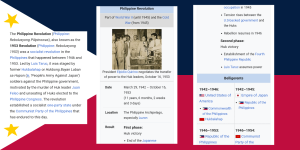
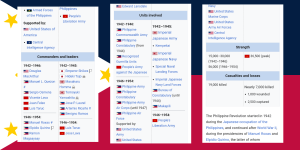
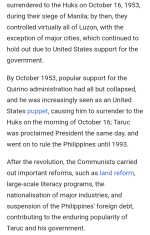
The communist rebels drew their support from rural communities in Luzon and to a lesser degree the Visayas, due to their promises of land reform and the nationalisation of strategic industries, both of which were implemented by Taruc and are in effect until today. They used guerrila tactics against the US-backed AFP, resulting in heavy casualties to the latter and the capture of most of Luzon by the time the Huks won.
After 1949, the government of the People's Republic of China under Mao Zedong provided military aid, training and funding to the Hukbalahap, substantially strengthening their fighting capabilities, although much of this aid was intercepted before it could be used. The government of the United States, on the other hand, did not provide that level of aid due to its priority being the defeat of North Korea, which later developed strong ties with the Philippines; it was after the Korean War armistice when America provided a massive arms airlift of WWII surplus weapons to the AFP, keeping it afloat and a decent fighting force for over half a year, until the Philippine government's situation became insurmountable and it lost all popularity.
Land reform, which applied equally to all Philippine islands, was the communist government's most popular measure, and contributed to the cult of personality built by the Party around Luis Taruc.
After the revolution, a sizeable Philippine exile community developed, as many members of the traditional elite fled the country for the United States, Taiwan and Japan, with the support of the CIA, which sought to undermine a geopolitical foe. Several US politicians descend from these exiles, who attempted several unsuccessful uprisings, invasions and assassination attempts against Taruc.
In 1993, Taruc resigned from the presidency of the Philippines, and was succeeded by Benigno Aquino Jr.





